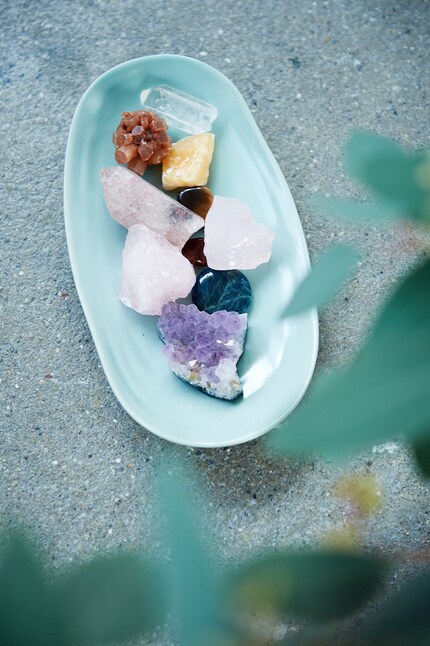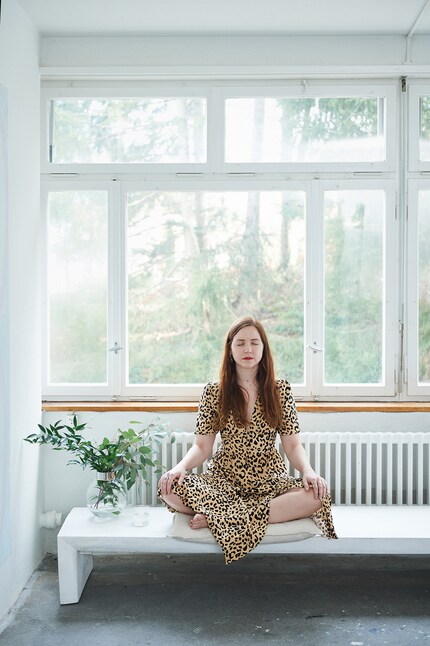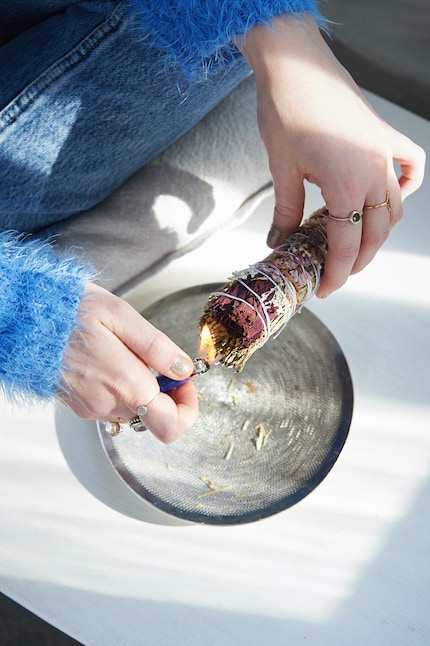
Guide
Inner peace and doughnut dreams
by Natalie Hemengül

I'd like to set off in search of myself, and why not find some inner peace, without embarking on a long journey. Where should I start?
Relaxation articles and their advice annoy me. It's the same every time: I hope to learn which mental button to press to finally see waves of happiness roll in and be fully satisfied, and I inevitably end up disappointed. These texts are nothing more than a collection of clichés, the kind of phrases that are sold at flea markets, printed on kitschy little boards. I have to admit that there's some truth to them, but they don't correspond at all to how I feel, and I inevitably find myself frustrated at not having reached enlightenment. As much as I don't really want to admit it, I'm going to have to start at the beginning and take it one step at a time, just like everyone else.
Here I am, determined to make my daily life more positive. All the personal development books and articles I've read extol the virtues of meditation. I don't understand this craze, or at least not yet. So I call in a pro, Carina Iten. This 32-year-old meditation coach discovered relaxation techniques 15 years ago. Today, she offers various courses and workshops on her website Tender Mind(in German).

20 minutes is how long Carina meditates every morning. Longer at weekends. "When I meditate, it's like rebooting my system," she explains. After her sessions, she feels relaxed, refreshed and happy again. "You also learn to observe your thoughts on a daily basis. The way they express themselves and comment on what's going on inside us. Our thoughts influence our actions and our actions, in turn, influence our thoughts. That seems obvious to me. "If you do the same thing over and over again, you will always repeat the same thoughts. But if you have new experiences, your thoughts change. Often, they open new doors."
« Meditation has changed my life.»
Behind her door, Carina discovered a completely different way of living. "In the morning, I used to press the snooze button on the alarm clock several times. Sometimes I'd only manage to get up five minutes before I had to leave. And morning chats were also impossible. But today, everything is different. "I'm no longer stressed. People can talk to me in the morning, because I've already given myself an hour to myself."

When we meditate, we direct our attention inwards. We listen to what's going on inside us, we pay attention to ourselves in the present moment. Mindfulness, on the other hand, is the informal practice of meditation. It consists of being totally present to all the tasks we perform on a daily basis. The two concepts complement each other and influence the way we communicate, eat, interact with ourselves and others, and what thoughts we allow to enter our minds. "Everyone has their own expectations. Some people want to relax in the evening after a stressful day, others want to improve their concentration, or have more energy or visualise a concrete goal. "She stresses, however
that you need to be open, and not have any expectations.
"Yes, it's important to work out what effect you want to achieve in order to find the right technique, but you need to let go of any expectations. "Carina believes that meditation improves concentration, performance and both physical and mental health, as it better connects the individual to their needs. You can also improve your emotional state, start the day feeling more aligned and end it feeling more relaxed.
She advises seeing the mind as a kind of muscle. A bit like when you do sport: the more you practise, the more you progress. Other relaxation techniques, such as taking a bath, only offer temporary relaxation, whereas meditation brings long-term effects. "Many people think they'll reach enlightenment after just one session. I'd advise you to wait 21 days before doing an interim check-up. Your body will have started to accept the new routine."
In general, there are three types of meditation. "A breathing-focused meditation involves practising various breathing techniques. In this way, you can influence the way you deal with physical pain. The thought meditations have you work on mantras, affirmations and visualisations to combat fears, for example. The third type is body meditation. It focuses on gestures, postures and bodily sensations."

"Keep it simple". That's the principle Carina follows. "Many people think meditation is complicated and don't dare even try it," but there's no right or wrong way to do it. According to the expert, you can also start without any prior knowledge: "Listen to what's going on inside you and observe your breathing. You'll notice that your thoughts are constantly wandering. It is this observation that will bring you back to your breathing". This game is repeated several times at the beginning. "The only mistake would be if you don't let go completely and look at your smartphone or the television at the same time as you try to meditate."
Carina explains that she can help me find the right type of meditation for me, but that I'll have to experiment on my own. "There is no one-size-fits-all formula. You can adapt various elements to suit your needs, such as the length and type of session, the location, and tools such as music and smells. Ultimately, meditation has to work for you."
The rest:
I now know what I'm getting myself into. Now all I have to do is practise. In my next post, I'll tell you what a 21-day challenge might look like and with what tools you can overcome distractions and other problems.
As a massive Disney fan, I see the world through rose-tinted glasses. I worship series from the 90s and consider mermaids a religion. When I’m not dancing in glitter rain, I’m either hanging out at pyjama parties or sitting at my make-up table. P.S. I love you, bacon, garlic and onions.
Practical solutions for everyday problems with technology, household hacks and much more.
Show all